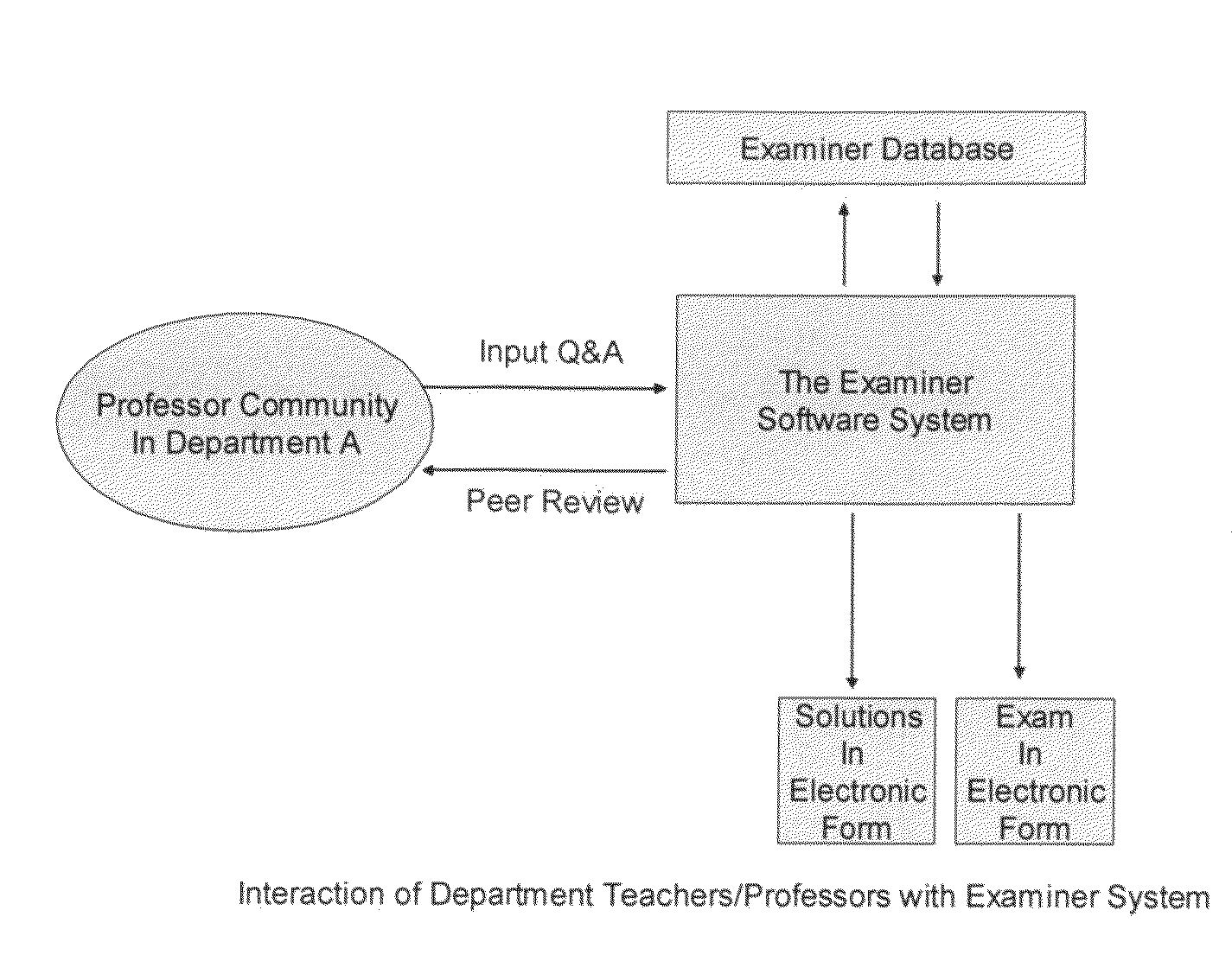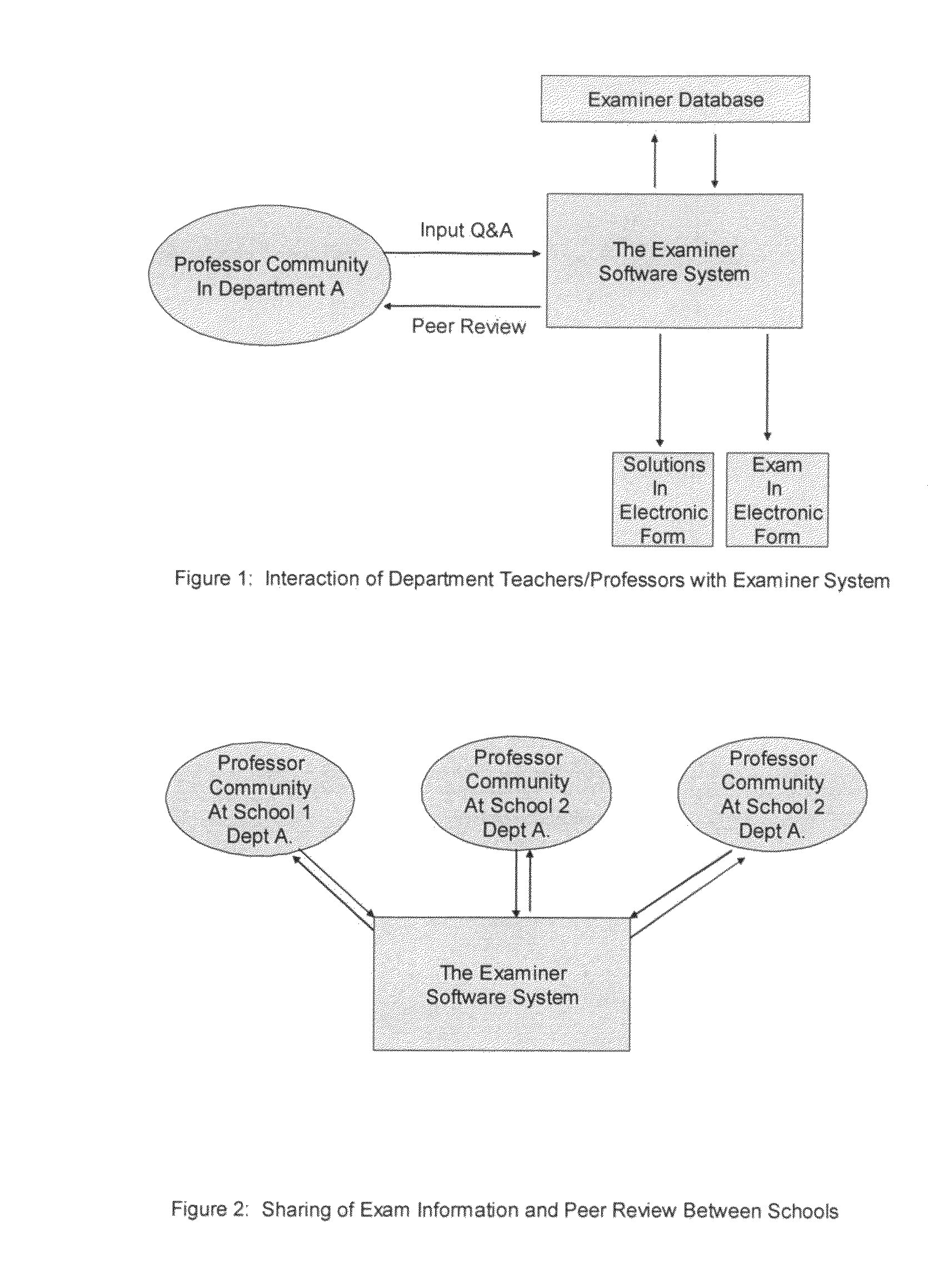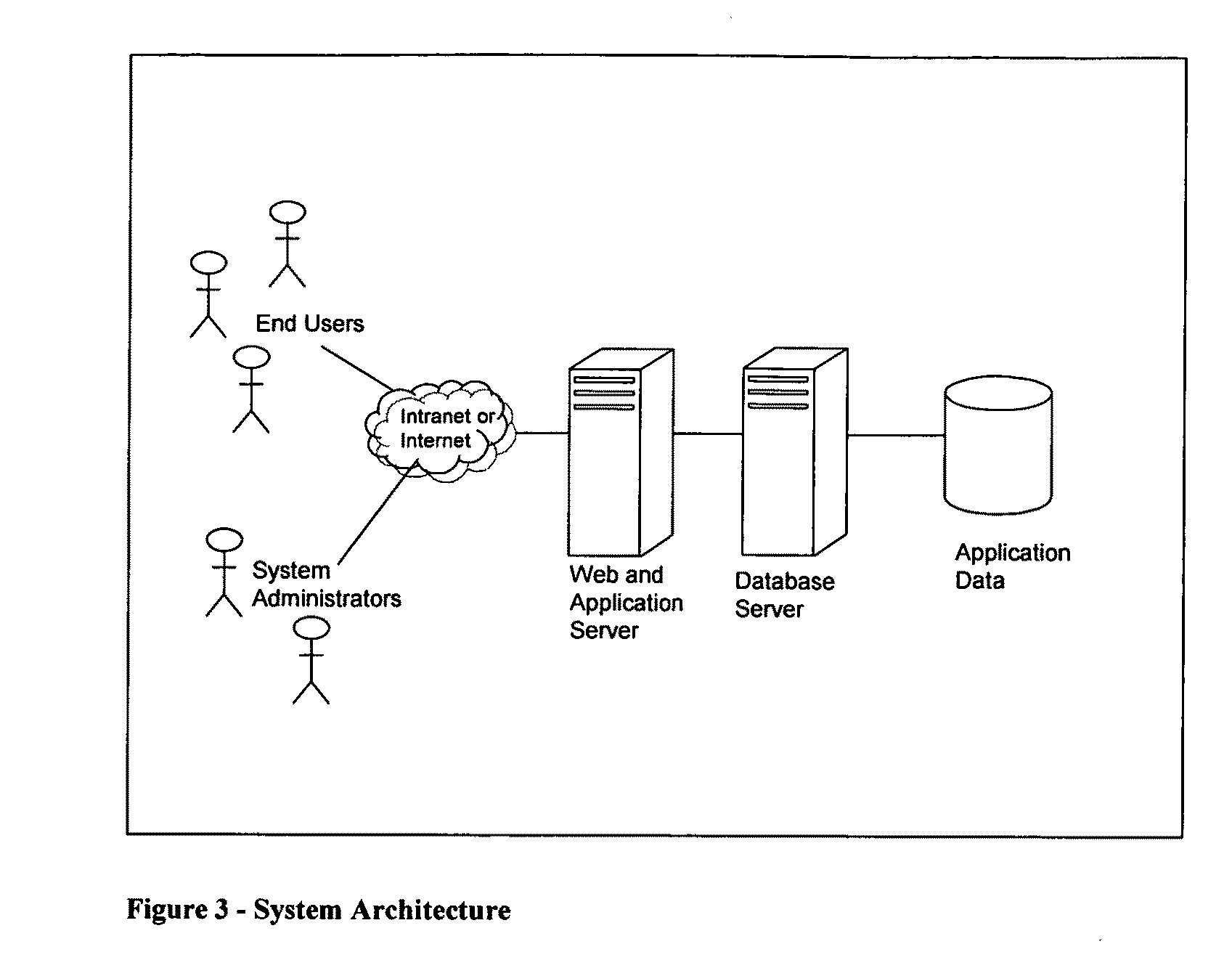Method and computer system of creating, storing, producing, and distributing examinations
a technology of creating, storing, producing, and distributing examinations, applied in the field of methods of teaching, can solve problems such as not fully exploiting a technological approach, and achieve the effect of improving the learning process for students
- Summary
- Abstract
- Description
- Claims
- Application Information
AI Technical Summary
Benefits of technology
Problems solved by technology
Method used
Image
Examples
example 1
[0047]Suppose Professor A of University XXX would like to produce an exam. He would first login to the system. The system would already have basic information about him, university, name, courses taught, etc. He would then choose which course he is writing a question for. In this case, he would choose “Investments” or Course Number “FINC-241”. He would also select among a group of categories for which the question falls under. In this case he chooses “Securities Markets”.8 He could begin by typing in questions for his exam. The software prompts him for the type of question. In this case, it is a multiple choice question, so he chooses that. He then uses the interface to type in the question.[0048]Which of the following does not belong to the fixed income asset class?[0049]a. U.S. Treasury securities[0050]b. Municipal Bonds[0051]c. REITs[0052]d. Govt. Agency Securities 8There would be a drop-down menu of categories for this particular course. If his / her question did not fit in any of...
example 2
[0055]Suppose Professor B of University XXX entered the system. He would be prompted for several items, including whether or not he wanted to enter a question, review someone else's question, or produce an exam. Suppose he chose to review someone else's question. He would then be produced with a list of questions that have not been peer reviewed in his course area.9 Suppose he chose the question recently posted by Professor A. He would then be presented with the question and the solution. He would review this and then approve or not-approve the question / answer. If he approved, then he would essentially be done. If he did not approve, he should give a brief reason why in a box. Then he may log out. 9This is the default of the system, but he could choose to look at questions outside his field of expertise if the department allowed this feature.
example 3
[0056]When Professor A logs in to the system again, he will have a notice that tells him the questions that have been peer reviewed. In the case of unsuccessful reviews, he will be given the short description.
PUM
 Login to View More
Login to View More Abstract
Description
Claims
Application Information
 Login to View More
Login to View More - R&D
- Intellectual Property
- Life Sciences
- Materials
- Tech Scout
- Unparalleled Data Quality
- Higher Quality Content
- 60% Fewer Hallucinations
Browse by: Latest US Patents, China's latest patents, Technical Efficacy Thesaurus, Application Domain, Technology Topic, Popular Technical Reports.
© 2025 PatSnap. All rights reserved.Legal|Privacy policy|Modern Slavery Act Transparency Statement|Sitemap|About US| Contact US: help@patsnap.com



